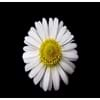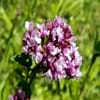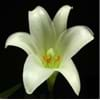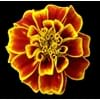Color
Orange, White, Yellow
Pink, Purple, Red, White
Color Meaning
Orange - Satisfaction and Passion, White - Purity and Innocence, Yellow - Happiness and Friendship
Pink - Sensitivity and Love, Purple - Elegance and Pride, Red - Courage, Desire and Love, White - Purity and Innocence
Line
Not Available
Not Available
Silhouette
Not Available
Not Available
Blossom Texture
Not Available
Not Available
Form
Not Available
Not Available
Sunlight
Full Sun
Full Sun, Part Sun
Type of Soil
Well-drained
Loamy
Essential Fertilizers
Sulphur
Phosphorus
Common Pests and Diseases
List of Pests
Aphids, Mites, Nematodes, Spider Mites, Thrips, Whiteflies
Aphids, Nematodes, Slugs
List of Diseases
Alternia Leaf Spot, Bacterial leaf spot or blast, blight, Crown rot, Downy mildew, Powdery Mildew, Root Rot, Rust, Wilt
Powdery Mildew, Rust
Bloom Time
All Summer Season, Fall Season
All Summer Season, Fall Season
Origin
America, Australasia, Central Europe, Northern Europe, Western Europe
Eurasia
Interesting Facts of
- Name "daisy" means "day's eyes" and when given to another person stands for transfer of secret from the giver to the receiver.
- Daisy opens the flower at dawn and closes it at night.
- The name Aster comes from Greek word Aster which means 'Star'.
- The flower looks like a single flower, but it is actually a cluster of about 300 small yellow disk flowers surrounded by colorful petals.
Lifespan
Perennials - a plant that lives for three or more years
Perennials - a plant that lives for three or more years
Uses
Not Available
Not Available
Health Benefits
Best remedy for Cough & Cold, Cures Constipation, Cures Urinal tract inflammations, Good for liver and gallbladder, Good remedy for Diarrhea, Prevents Cystitis, Regulates the Menstruation cycle
Best remedy for Cough & Cold, Regulates the Menstruation cycle, Used for sinus pain, hay fever and headache
Medicinal Uses
Acts as a antispasmodic, Acts as an anti-inflammatory, Natural Healer, Treats mouth sores
Acts as a antispasmodic, Acts as an anti-inflammatory
Culinary Uses
Used in salads, soups and sandwiches
Used in salads, soups and sandwiches
Cosmetic Uses
Lightens the skin, Used as a by- product in fairness creams, Used in Perfumes
Best for Healing, Used in Perfumes
Occasional Uses
Father's Day, Thanksgiving Day
Wedding
Allergy
Asthma, Dark circles under eyes, Hayfever, Headache, Itching, Itchy eyes, Itchy throat, Persistent upward rubbing of nose, Red eyes, Runny nose, Sinus pain, Sneezing
NA
Scientific Name
Bellis perennis
Symphyotrichum novae-angliae
Sub kingdom
Tracheobionta
Tracheobionta
Super Division
Spermatophyta
Spermatophyte
Division
Magnoliophyta
Magnoliophyta
Order
Asterales
Asterales
Class
Magnoliopsida
Magnoliopsida
Family
Asteraceae
Asteraceae
Sub Family
Asteroideae
Asteroideae
Genus
Not Available
Not Available
Number of Species
Not Available
Not Available
More about Daisy and Aster Facts and color
You must be curious to know more about Daisy and Aster facts and color. flowers.comparespecies.com will let you know all the Interesting Facts about Daisy and Aster. Daisy comes in Orange, White, Yellow colors whereas Aster flowers are with Pink, Purple, Red, White colors. Other Daisy and Aster facts will definitely amuse you.
Daisy and Aster growing conditions
Absolute growing condition is the only key to keep plants in good health and in good shape. Let’s learn about essential Daisy and Aster growing conditions. Daisy requires Full Sun and Enough watering with 6.00 of Well-drained soil. Aster needs Full Sun, Part Sun and Enough watering with 6.00 of Loamy soil. Get other Daisy and Aster facts in the sections below.
Daisy and Aster Facts
Want to know about Daisy and Aster facts? Get all the Daisy and Aster facts here.
Daisy and Aster Classification
After knowing about various Daisy and Aster facts, let's study their classification. Based on genetic and physical features, Daisy and Aster classification starts with knowing their scientific name. The scientific name of Daisy and Aster is Bellis perennis and Symphyotrichum novae-angliae respectively. Daisy belongs to Asteraceae family whereas Aster falls under Asteraceae family. Also check out Flowers by Color so as to plant colorful aroma in the garden.





